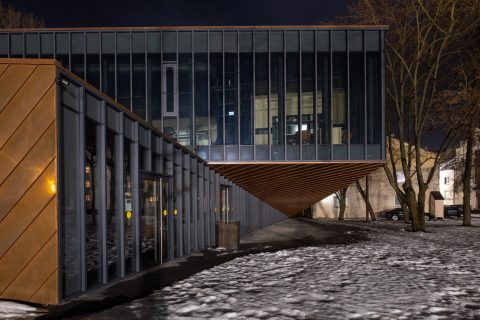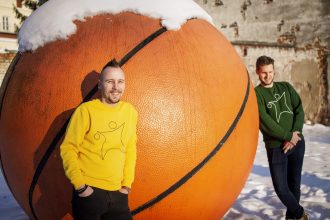A football club founded in 1933 in Kaunas at the Inkaras rubber factory survived several political systems and even the factory itself. A few decades later, in a family of new Kaunas residents, the father of which used to say when watching ice hockey on TV, “Don’t you dear supporting USSR, choose anything else: Czechs, Germans or Swedes,” (but who himself supported the USSR national basketball team composed mainly of Lithuanian players), Evaldas Šemiotas was born.
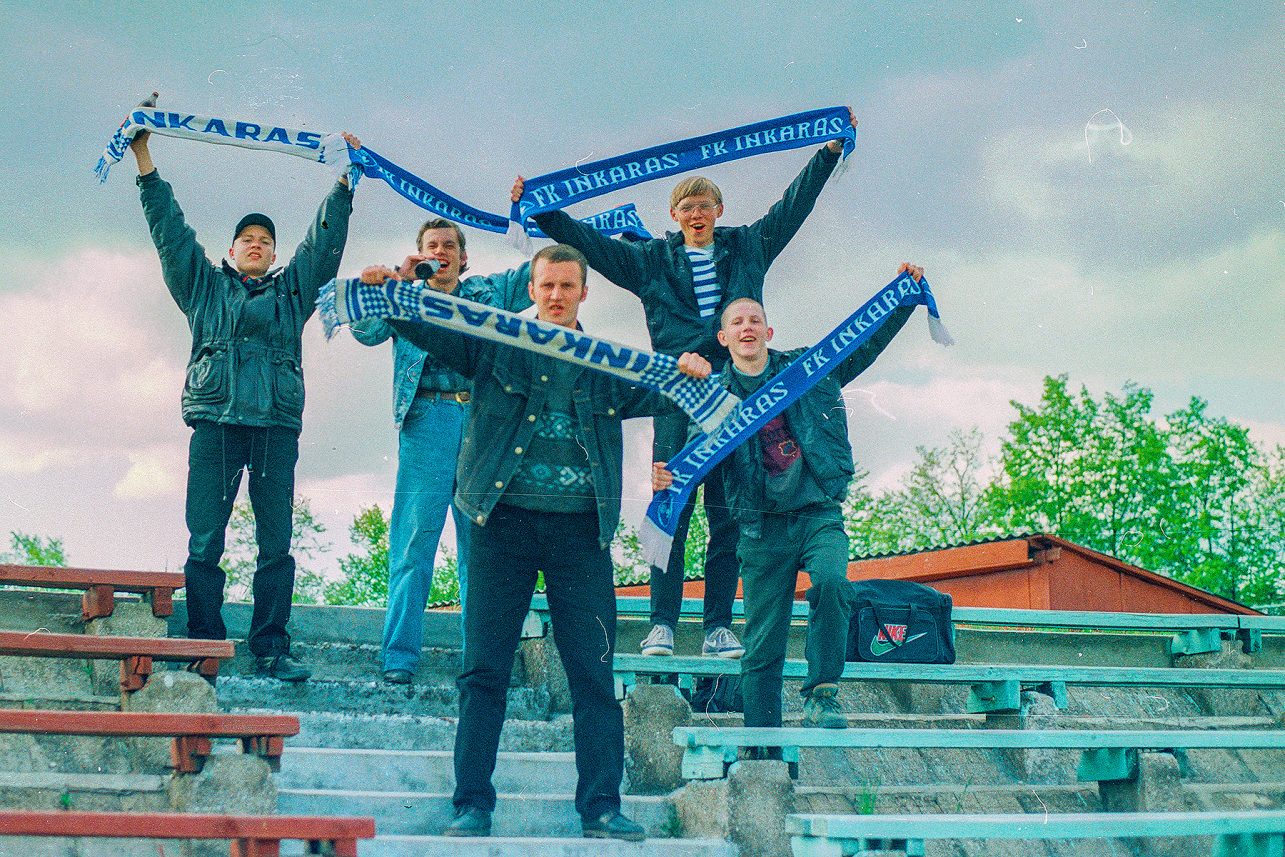
After kicking the ball in the yard in Kalniečiai, between trees and bricks, even with a uniform, he was taken by his father to the training session of Jurijus Fedotovas, who was the first coach of Arvydas Sabonis. However, never having met the coach there, he ended his career in sports. But what has not ended, was his path as a fan and photographer. You will learn more about the life drenched in his own and others’ sweat from Evaldas himself. And even if you don’t know him, you will have definitely seen his photographs.
“In 1981, my parents took me to the Sports Hall to see a basketball game for the first time. I was shocked, it seemed like some kind of nightmare. We were losing to SQUIBB club from the city of Cantù in Italy. There were many middle-aged men in winter coats screaming and shouting, never again, I thought. But then I saw a World Cup in 1982 on TV and got interested, in terms of the game. I felt like playing football too, so we put together a yard team. And later, basketball games stopped being so terrifying as well and even became quite relevant. The patriotic upbringing was intertwined with this sport.”
Inkaras appeared in my life after the two Žalgiris: Kaunas basketball club and Vilnius football club. At around sixteen I started going to Sports Hall on my own and would go to the stadium in the capital, to the fourth tier of the south stand. At the time Vilnius played in the Soviet Supreme League. Kaunas ASMM Inkaras was invited to the Second League (third most important) after it was expanded in 1989. There, without any competition it took a guaranteed 22 place among the 22 clubs from the Baltic countries, Belarus, Ukraine, Moldova, several western regions of Russia, and Nagorno-Karabach. A huge audience would gather at Darius and S. Girėnas stadium. Although Inkaras was at the bottom of the table, for us it was equal to Kaunas team. I wasn’t going abroad with the team as a teenager because I was a semi-good kid.”
“In general, there was no division at the time, like, hey, we are Vilnius Žalgiris ultras and we are Kaunas Inkaras ultras. Kaunas residents, who had an active interest in sports, went to Inkaras matches, then to the Sports Hall and then to Vilnius to support Žalgiris. Lithuanian national symbols were forbidden but then the Reform Movement appeared, and I remember embroidering the Columns of Gediminas on a flag. We were on the way to the stadium with a guy smaller than me on the bus, I pulled out my flag and he says, “Now the cops will arrest us, that’s so cool!”

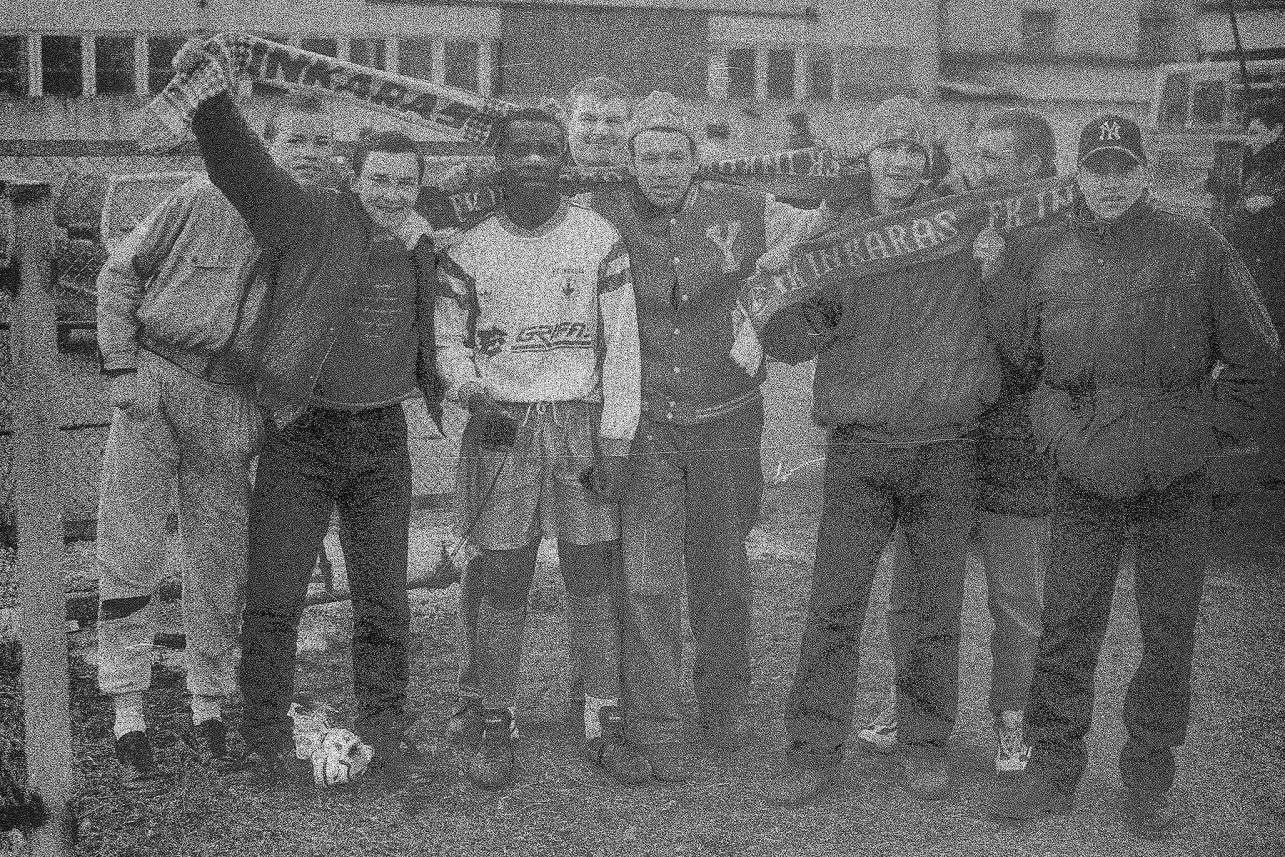

“That time before the independence was so patriotic. Those, who were brought up in the similar way – that you should not support the USSR – were like-minded. Of course, the adrenaline of youth played its part. Fans from Minsk show up and you have to fight! These clashes took place in Vilnius and I did not take part in them.”
“From 1991 to 1993, I served in the National Defense. At first as a volunteer and later in a Training Unit. My army buddy Povilas had a camera, and he recorded our life. He remained in the infantry and I moved to another battalion, so, I had to take up camera myself. The whole process seemed like a miracle to me. You put the film, then develop it, put it into a magnifier, illuminate the paper… That magic was attractive to me. While I was in the military, I didn’t have much time to follow football but when I got back home, I returned to football and became interested in photographing it. I took photos with quite an amateur equipment, Zenit. I did not have a telescopic lens. I would capture the life around rather than the game itself.
Then we get to 1995. Athens, European Basketball Championship, where Lithuanians lose to Yugoslavs. There was a minor one-day trauma and then they returned, recovered and we started to celebrate. I went to the Town Hall with a camera and photographed how Sabas and others threw medals in the air, all the euphoria… And Ingvaras Butautas-Storas, the fan of Vilnius Žalgiris, was working for the newspaper Lietuvos aidas at that time, and I somehow gave him the photos. These were my first photos sold to the press.
Later, Storas asked not only for photos, but also to talk to a couple of football players from Inkaras. It was a pretty important match. And since we were making fanzines ourselves – as a kid, I had made a newspaper out of my school notebook (it might have been my first step in journalism) – I did not say no. Unfortunately, the footballers answered all my questions in “yes” and “no.” I thought my journalist career will be over before it even started. After reviewing the situation, I decided to prepare the text according to my statements that they confirmed.”
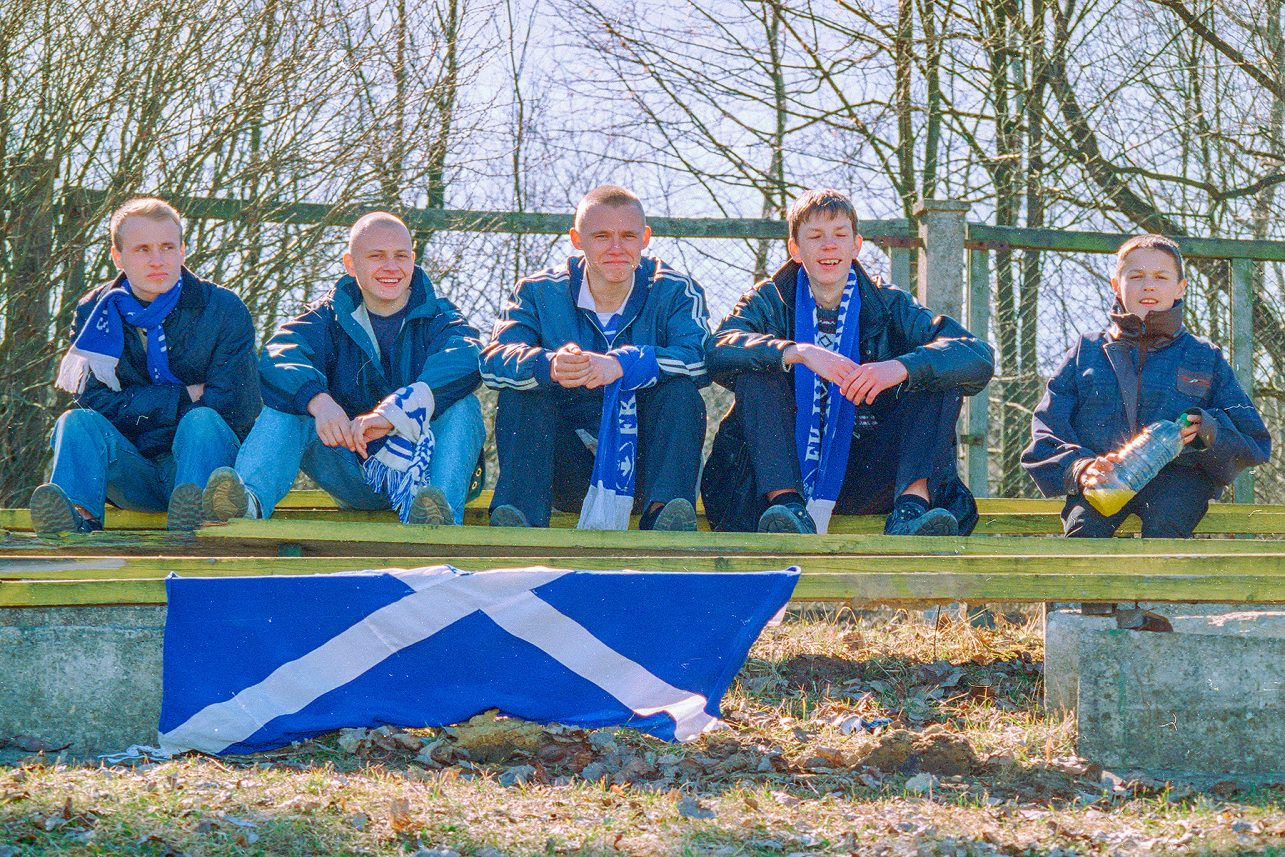
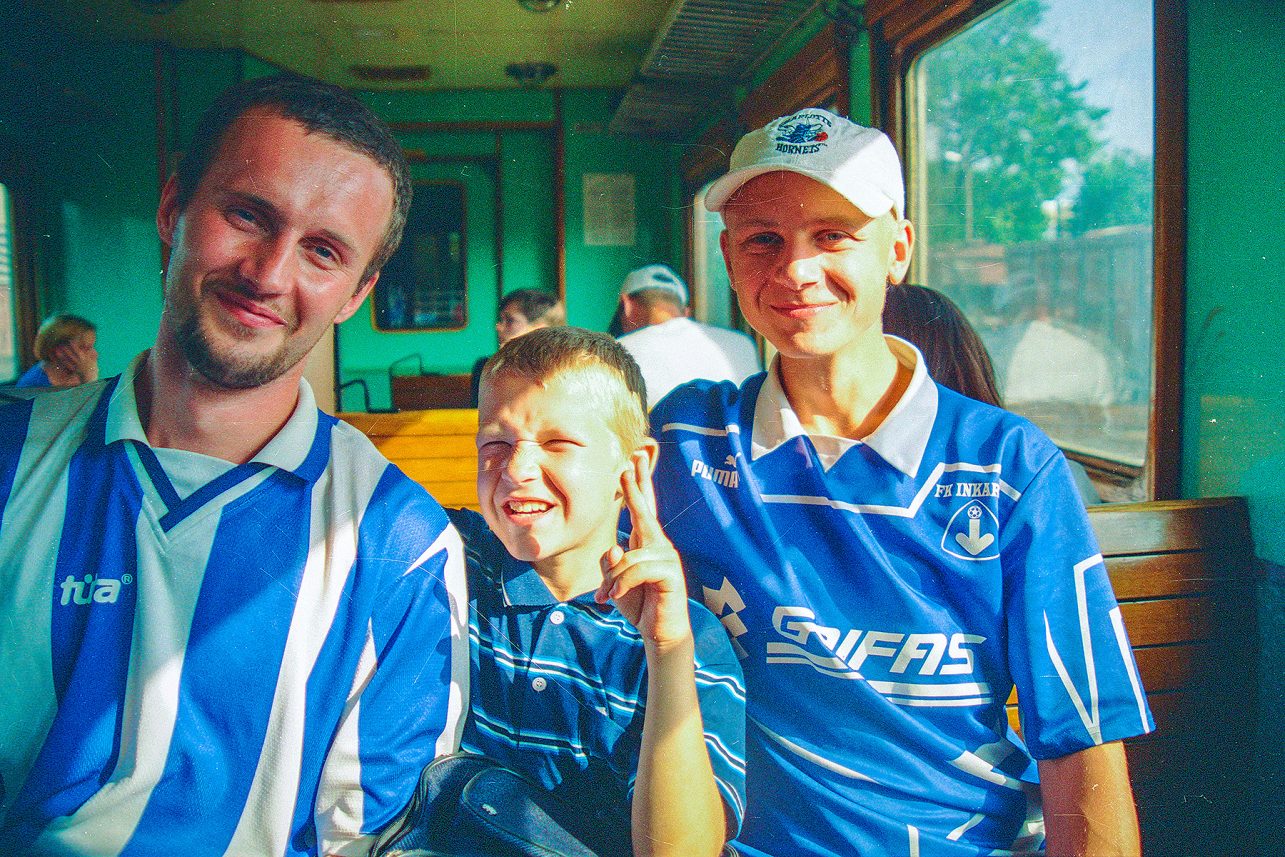
“Going back to football… The transformation took place in the summer of 1994. When Lithuanian clubs withdrew from the USSR championships in 1990, Inkaras played in the Baltic Championship. It wasn’t that great and in 1991, the national championship began. Then, the majority of Inkaras fans chose to support Kaunas Banga, on the basis of which FBK Kaunas was later formed. So, the fans of Banga became the FBK fans. And we hesitated. During my free days from the army, I even went to several matches with Banga, to Vilnius, Mažeikiai… But my cousin’s cousin Robertas Vilimas was playing in Inkaras at the time. The promising player then asked, “Why are you supporting Banga? What kind of team is that? Come to Inkaras, these are serious men. You will see what’s about to happen, we are assembling a stronger team…” We might not have believed him fully, but we still returned. We were accused of seeking after honors because that year Inkaras received the support of Grifas. The club changed its colors from green and white to blue and white. Such talents of Kaunas school as Darius Maciulevičius, Aurelijus Skarbalius returned to the club and in 1995 Inkaras Grifas became Lithuanian champions and cup winners. At that time, more young people joined us, yet that fan movement was not particularly large. Many of us weren’t real ultras, although a few were quite serious, even today there are some who walk with Inkaras gear. I would call them the ultras of Inkaras, because after all the club has disappeared from the football map almost 20 years ago.”
“I have participated in fights, but not for Inkaras. Although we also had minor conflicts in Mažeikiai and Telšiai. Even Šilanskas was there. I have traveled abroad to support the national team. A more serious trip was to Teplice in Czech Republic. There, two of ours, who were often warming themselves up with Polish bear, tried to prove to some Poles that they must love Lithuania. And there were fights in Teplice itself.
“When Kaunas was a stopover for fans of other cities traveling further or if the match ended late and there was no transport available to get home for Vilnius or Klaipėda residents, I would host them. And when fan football tournaments took place in Kaunas and there were no hostels – the hotels too expensive – we would share the guests. You are playing in a tournament and would like to rest after the first day but there are ten Estonians and two Lithuanians at your place and scaring the neighbors at night. And the next day you go to play again. I have also hosted some Vilnius residents who were released by the police too late after their conflict with Kaunas residents. The last time a fellow fan stayed with me, was probably few years ago.”
“In terms of photography, no. 1 sport for me is track-and-field. It’s the queen! It’s very diverse, fun, flexible and aesthetic. And then the line-up goes like this: first loves football and basketball, fiercely dynamic handball, flying and graceful volleyball, brutally awesome rugby, sudden and cool hockey, roughly aesthetic judo, diverse modern pentathlon, elegant tennis. The exact order would depend only on the mood and the season.
But if I had to choose between going to the Olympics or the football championship… I would choose the rugby world cup. You can’t see the top-quality rugby in Lithuania, so I am very interested. Olympics has many segments, many sports, so it would be fun to capture the diversity, colourfulness. And I have already been to the big stadiums and seen the best teams. They do not interest me that much. But I would like to go to the South American football championships or witness some matches between Russia and Ukraine or Russia and Poland.
Often, social things in sports are more interesting to me than the game itself. So, I do not understand those who say, “Let us not mix sport with politics.” Sport emerged to replace wars, and in doing so it became part of politics that very moment. I remember when Yugoslavia was expelled from the European Football Championship in 1992 because of the war, and Denmark, which replaced it, won the championship. After that, the separation of the warring parties was forgotten. Although it is precisely due to the emergence of that first idea of major sporting tournaments that we should cut the aggressor countries off from the Olympic Games or other international tournaments. It would be nice if, in this way, sport became a tool for the righteous and the oppressed instead of serving as an instrument of propaganda for the powerful ones.”
All photos are from the personal archive of E. Šemiotas

